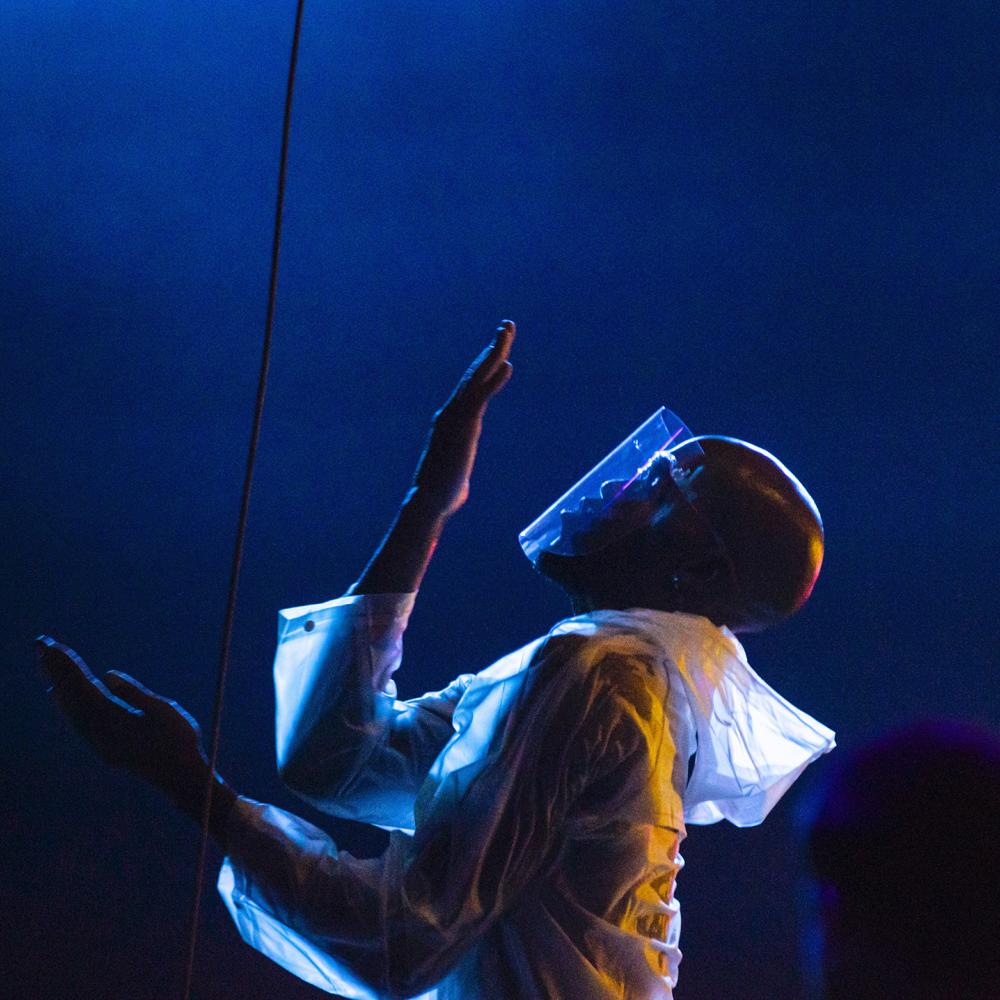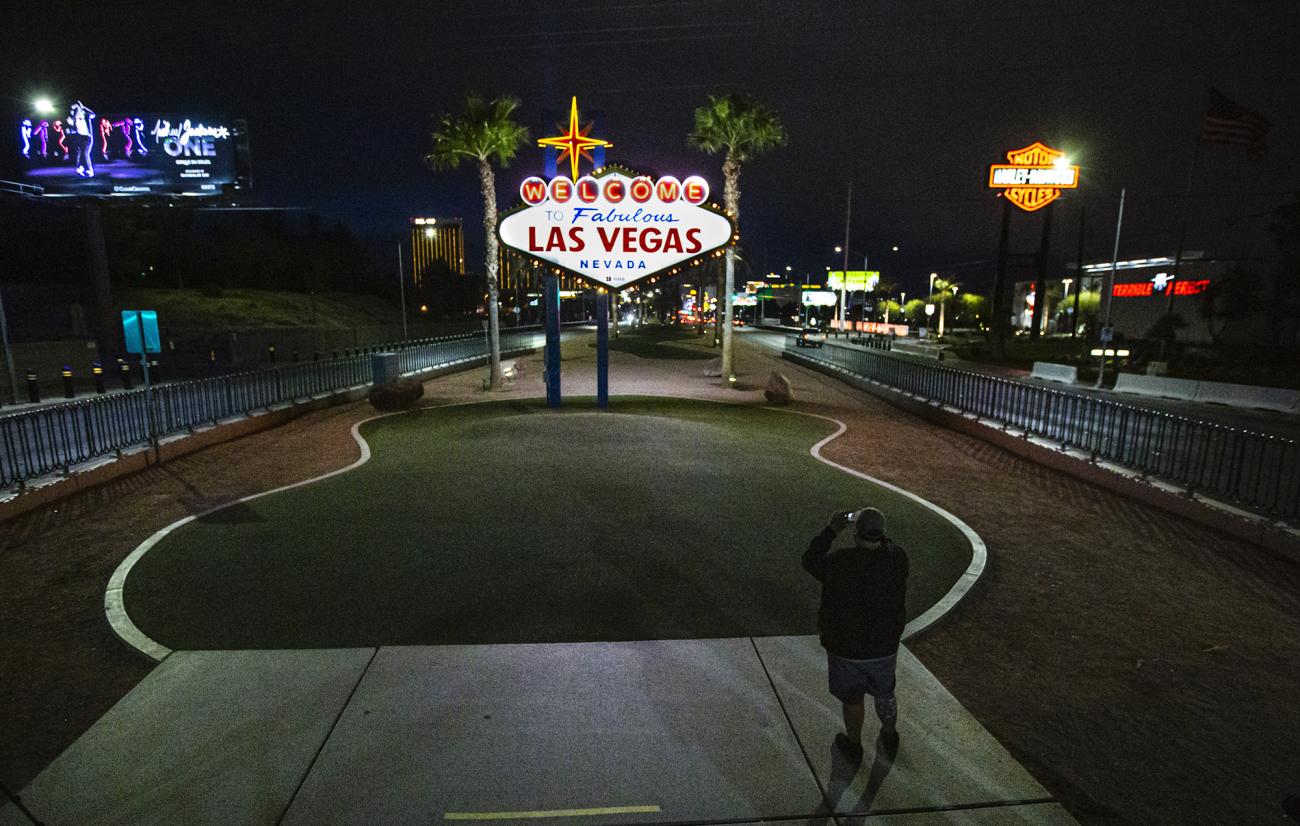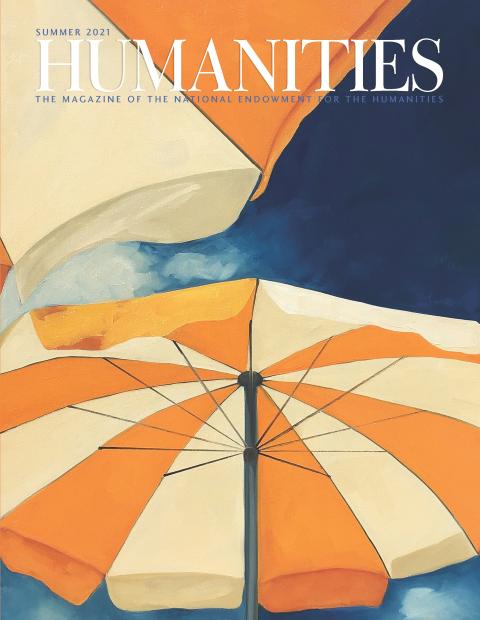When Las Vegas closed nonessential businesses last March to help curb the spread of coronavirus, it was the first total shutdown of the Vegas Strip since President John F. Kennedy’s funeral in 1963. And that lasted less than one day.
“The way the lights just turned off was extremely shocking,” says Heidi Rider, a clown in Absinthe, a large-scale cabaret-variety show performed under a circus tent outside Caesar’s Palace. This long-running hit puts performers and 660 audience members within sweating distance of each other, twice a day, 365 days a year.
Thousands of businesses in this tourism mecca were given less than a day to prepare for the shutdown. That’s a huge undertaking for a city where entertainers, backstage workers, card dealers, servers, bartenders, housekeepers, chefs, event and convention workers, and others keep the festivities running 24/7 for approximately forty million visitors annually.
Photojournalist and photo editor Miranda Alam observed the shutdown from the Luxor Hotel & Casino. “It was bizarre to see up close,” she says during an interview. “The property was basically empty. Almost all the slot machines displayed a blue ‘Out of Order’ screen. A single table game had a small group of men. By midnight, every screen said ‘Out of Order,’ and the table game was ended by casino staff. The only thing still open was Krispy Kreme. I remember how unsettling it felt in that moment to note the significance of something that under normal circumstances would be the exact opposite.”
Nevada had the unlucky distinction of having the highest jobless rate in the country after the pandemic hit. With COVID-19’s arrival, nonstop crowds, the lifeblood of Vegas, became danger zones. On top of that, many who go to Vegas don’t usually go to be careful. As the Strip went dark, and the crowds disappeared, so did the jobs. Poof! Just like one of David Copperfield’s magic feats, they were gone. The pandemic turned the most energized place on the planet into a ghost town. Even the Bellagio’s dancing fountains were turned off.
To document the impact on Vegas performers throughout the city from big shows like Cirque du Soleil to Majestic Repertory Theatre in the Arts District, Alam curated the multimedia online exhibition “Performing in the Dark.” It features her work and that of photojournalists Rachel Aston, Benjamin Hager, Ellen Schmidt, and Chase Stevens from the Las Vegas Review-Journal; Christopher DeVargas, Steve Marcus, and Wade Vandervort from Greenspun Media Group publications; and freelance photojournalists Bridget Bennett, Ronda Churchill, Mikayla Whitmore, and Aaron Mayes.
“When Nevada Humanities first reached out to me last December with the offer to curate an exhibition,” says Alam, “entertainment and the way the pandemic had affected the industry was the first thing I thought of. It also helped that Las Vegas is home to some truly talented visual journalists who did an amazing job of telling the stories of some of these unique and valuable members of our community as they navigated their new reality.”
Rider was one of the 369,657 people, about a third of the Las Vegas workforce, who found themselves unemployed last April. She was photographed by Alam and two contributors to the exhibition. Like many performers, she struggled to find ways to create some sort of opportunity for interactions. “Virtual is not live. We’re trying to figure out how to adjust to this moment in the most interactive way possible, into something that goes beyond making a video, sharing it, and somebody passively watching it.” This included learning how to navigate Zoom, Facebook Live, YouTube, and other social media platforms. “It’s like learning a new language. Especially for someone who is highly practiced in doing it live. Certain things will translate easily, seamlessly, but most things do not because there is no live energetic exchange. And how do you create the same kind of a feeling on a tiny little rectangle on a screen?”
Also, without the benefit of nightly shows, performers had to find creative ways to keep their skills sharp, as any lapse could be dangerous once they returned to the stage. Acrobats, aerialists, tightrope walkers, and others trained in living rooms, backyards, parks, even swimming in Lake Mead.
As a visual and performance artist, Rider had to keep her creativity flowing. When Absinthe returned to much smaller, socially distanced masked crowds, it was another learning curve. “For the clowns, it was really, really tricky for us because most of what we do is improvisational between our show partner and with the audience. So, each night is a different show because we respond directly to what the audience gives us, and it becomes a reciprocal building of comedy. It took a while to really understand that we weren’t exercising that muscle. That’s a skill that you have to exercise. It’s like this energetic science. And if we don’t practice that all the time, then it gets weak.”
As restrictions are lifted, the city is returning to work. At Absinthe, Rider notes a change in audiences’ energy. “There’s just a different appreciation that we have for something when we don’t have it for a long time, and I can feel that in this space now. It’s a combination of us finally being able to see people’s faces and them feeling more freedom without a mask on.”
Rider says that something else is happening post-shutdown. “There are all these different ways in which people were enriching other sides of their creativity during lockdown, and now we’re coming back to what we did before, but we’re bringing that with us. There’s a very experimental energy and support system for performance. I think the pandemic has a lot to do with what is coming now—we were forced to find other ways of creating things, either together or separately. And now we’re bringing those new discoveries and interesting crossovers back to each other. Some people turned to photography, or some people turned to video art, or costume building or painting. There’s a shift that’s happening that’s really exciting, and I feel like a creative renaissance is happening here.”




